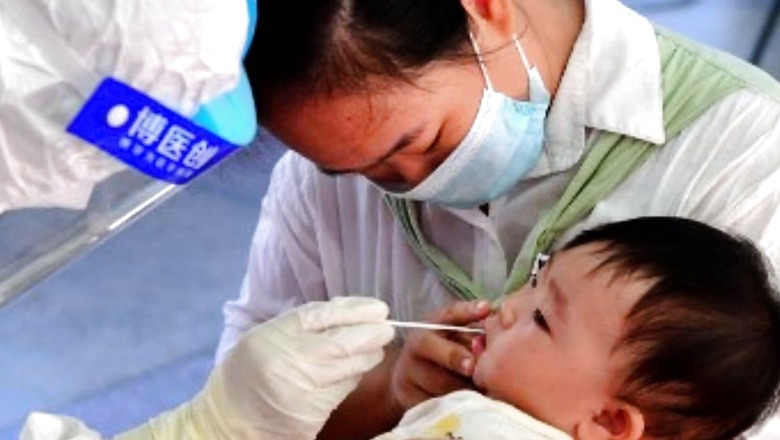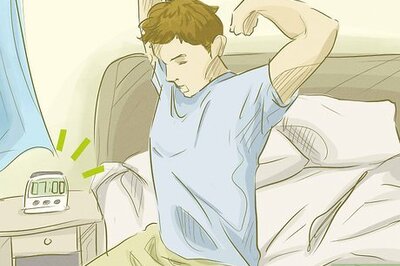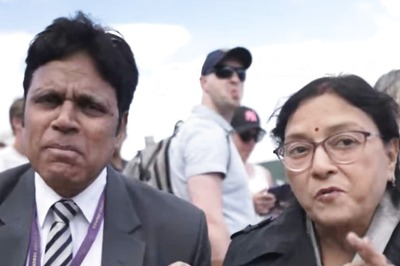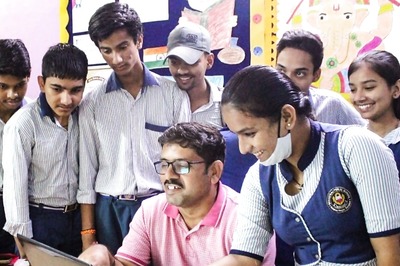
views
A startling statistic emerged as advisers to the Food and Drug Administration on Tuesday debated use of the Pfizer Covid-19 vaccine in children ages 5 to 11. According to one federal scientist, by June an estimated 42% of these children had already been infected with the coronavirus.
That figure was much higher than anyone expected. But the estimate, which was from the Centers for Disease Control and Prevention, might have overstated the percentage of children who were infected, several experts said. Among other flaws, the percentage was based on tests known to have a high rate of “false positives” — signaling the presence of antibodies where there are none.
And even if unexpectedly high numbers of children have been infected, parents should not assume that they are shielded from the virus and don’t need the vaccine. Immunization will cement that protection now and against future virus variants, said Scott Hensley, an immunologist at the University of Pennsylvania.
“The data are clear that even if they had been exposed in the past that they would benefit from the vaccine,” he said, speaking of children. “The risks of vaccination are very low, whereas the benefits are appreciable.”
Are 42% of younger children really immune to the coronavirus?
Most likely, no. The CDC estimate was based on tests of a small number of children who had blood drawn for routine medical care or other illnesses. That is not a representative sample of the general population, said Akiko Iwasaki, an immunologist at Yale University.
For example, the sample may have included children who have cancer or other conditions that weaken the immune system. “Usually, kids don’t get blood drawn for any routine medical care unless they have some reason to,” Iwasaki said.
Studies based on blood samples at clinics or by recruiting volunteers notoriously overestimate how many people have been infected, said Deepta Bhattacharya, an immunologist at the University of Arizona.
“If you’re not careful about doing a random sample, then the seroprevalence numbers can get pretty wacky,” he said.
For example, scientists examining blood donations estimated that about 76% of the population in Manaus, Brazil, had been exposed to the virus by October 2020, perhaps achieving herd immunity. That presumption turned out to be horribly wrong: Most of Brazil, including Manaus, saw a long and deadly wave of infections this year, which claimed more than 4,000 lives per day at its peak.
The ideal way to estimate “seroprevalence” — the percentage of people with antibodies to the virus — is to randomly sample households, which is time-consuming and labor-intensive. And persuading large numbers of families to have blood drawn from healthy children is likely to be a losing proposition.
In America, the percentage of children infected is likely to be lower than the CDC’s estimate, because many of them were at home during the big surges, Bhattacharya said. The 42% figure “doesn’t pass the smell test.”
I think my child had COVID. Can I find out before saying yes to the vaccine?
If you don’t already have evidence of your child’s infection — for example, the result from a PCR test — there is no reliable way to confirm it now. COVID-19 symptoms closely resemble those of other respiratory illnesses. “It will be difficult to ascertain who had infection and who did not,” Iwasaki said.
And testing for antibodies after the fact is fraught. Apart from the possibility of false positives, the tests may not detect antibodies in children. Many never become visibly ill, and several studies suggest that people who are asymptomatic or have only mild symptoms produce far fewer antibodies than those who are severely ill.
“It’s not clear to me that the serological tests can be used to faithfully identify people who have had exposures before,” Hensley said. “I don’t think we’re at that point now.”
I know my child had Covid. Does she still need the vaccine?
Skipping vaccination would be a gamble, experts said. There are many unanswered questions about the strength and durability of immunity in children.
“There are too many unknowns on that, whereas the vaccine is known — that’s my caution,” said Dr. Peter Chin-Hong, an infectious disease expert at the University of California, San Francisco. “Certainly, I wouldn’t put all my eggs into the previous infection, natural immunity basket.”
As with the protection conferred by vaccines, immunity from natural infection may weaken over time, leaving children susceptible to reinfection. “I’d be interested to know when that infection was,” Chin-Hong said. “If it was a year or so ago, then I would worry about waning immunity.”
In adults, natural immunity generally “seems to be holding up well,” Bhattacharya said.
But it’s unclear whether the protection seen in adults extends to children, in part because most children tend to have milder symptoms than adults and may not have mounted a full-throttled defense against the virus.
Natural immunity in children also may not hold up against variants. Several studies have shown that just one dose of the vaccine in a previously infected adult can turbocharge protection, even against variants such as beta and delta.
“I suspect that will be the case with kids, as well,” Hensley said.
Vaccination should also lower the chances of a reinfected child passing the virus to others who may be susceptible to severe illness. “If someone in your household is extremely vulnerable, then the consequences of that are pretty bad,” Bhattacharya said.
I’m worried about side effects. Is the vaccine safe?
All of the evidence so far indicates that the vaccines are far safer than a bout of COVID-19, even for children.
For example, although the vaccines have been associated with the rare chance of myocarditis, inflammation of the heart, in young men, the symptoms have quickly resolved in most of them. COVID-19 is much more likely to cause myocarditis, and a much more severe version. “At the end of the day, acquiring immunity through infection is risky business,” Hensley said.
Over the course of the pandemic, more than 8,300 children ages 5 to 11 have been hospitalized, and roughly one-third of them were admitted to intensive care units, the FDA advisers were told. At least 94 children in this age group have died. Some continue to have symptoms weeks to months after the infection has resolved.
Federal agencies are continuing to collect safety information about the vaccines, Hensley noted, and will pick up any serious side effects that surface.
For children who have a history of heart disease or do not respond to the vaccine because of certain medical conditions, there may be another option. Some companies are developing long-lasting antibody drugs that can significantly cut the risk of infection.
AstraZeneca’s antibody cocktail could protect recipients for up to a year, Chin-Hong noted. “That’s the wave of the future.”
Read all the Latest News , Breaking News and IPL 2022 Live Updates here.




















Comments
0 comment